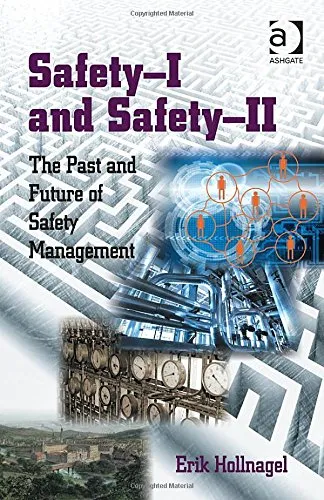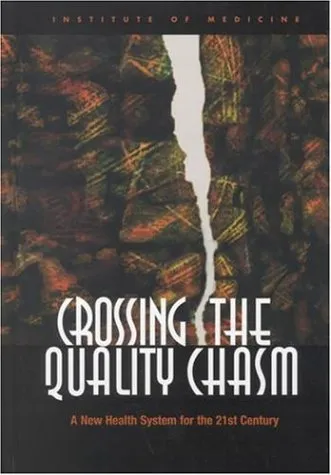Safety-I and Safety-II: The Past and Future of Safety Management
4.5
Reviews from our users

You Can Ask your questions from this book's AI after Login
Each download or ask from book AI costs 2 points. To earn more free points, please visit the Points Guide Page and complete some valuable actions.Related Refrences:
Introduction
Welcome to an extensive exploration of safety management through the lenses of Safety-I and Safety-II. In this comprehensive introduction to the book "Safety-I and Safety-II: The Past and Future of Safety Management" by Erik Hollnagel, we embark on a journey to understand how the concepts of safety have evolved and what the future holds. This book is an essential resource for practitioners, scholars, and anyone interested in the dynamic field of safety management.
Detailed Summary
In "Safety-I and Safety-II: The Past and Future of Safety Management," Erik Hollnagel challenges traditional paradigms of safety and introduces a revolutionary new approach. Safety-I, the traditional safety management approach, focuses on preventing things from going wrong by identifying and eliminating risks. It is reactive by nature and is primarily concerned with investigating accidents and near misses to prevent future occurrences.
Hollnagel proposes a shift towards Safety-II, a proactive and holistic approach that views safety as the ability to succeed under varying conditions. Instead of focusing solely on what goes wrong, Safety-II encourages understanding why things go right. It emphasizes flexibility, adaptability, and resilience within complex systems.
This book delves deep into the mechanics of both approaches, contrasting their methodologies and implications. Through real-world examples and a wealth of research, Hollnagel provides a compelling argument for transitioning to a Safety-II mindset, addressing the limitations of Safety-I while embracing the complexity and variability inherent in modern socio-technical systems.
Key Takeaways
- Safety-I focuses on what goes wrong; Safety-II focuses on what goes right.
- Safety-II advocates for understanding normal work processes to enhance system resilience and adaptability.
- The transition from Safety-I to Safety-II involves a fundamental shift in perspective – from management by compliance to management by competence.
- Embracing variability within human and system performance is crucial to achieving true safety.
- Safety management should incorporate both reactive and proactive strategies to navigate complex environments effectively.
Famous Quotes from the Book
"Safety can be regarded as the ability to succeed under varying conditions."
"Safety management must therefore change from ensuring that 'as few things as possible go wrong' to ensuring that 'as many things as possible go right'."
Why This Book Matters
This book is crucial because it addresses the changing nature of work and safety management in an increasingly complex and interconnected world. As global systems evolve, so too must our approach to safety. Hollnagel's insights challenge conventional wisdom, offering a new way to think about safety that aligns with the realities of modern systems.
By understanding the principles of Safety-I and Safety-II, readers are better equipped to manage risks in a way that is not only reactive but also proactive and forward-thinking. This shift is vital as industries face new challenges and opportunities brought about by technological advancements and ever-changing operating environments. Hollnagel's work is indispensable for anyone involved in creating safer, more resilient systems.
Free Direct Download
You Can Download this book after Login
Accessing books through legal platforms and public libraries not only supports the rights of authors and publishers but also contributes to the sustainability of reading culture. Before downloading, please take a moment to consider these options.
Find this book on other platforms:
WorldCat helps you find books in libraries worldwide.
See ratings, reviews, and discussions on Goodreads.
Find and buy rare or used books on AbeBooks.
1524
بازدید4.5
امتیاز50
نظر98%
رضایتReviews:
4.5
Based on 0 users review
"کیفیت چاپ عالی بود، خیلی راضیام"
Questions & Answers
Ask questions about this book or help others by answering
No questions yet. Be the first to ask!



